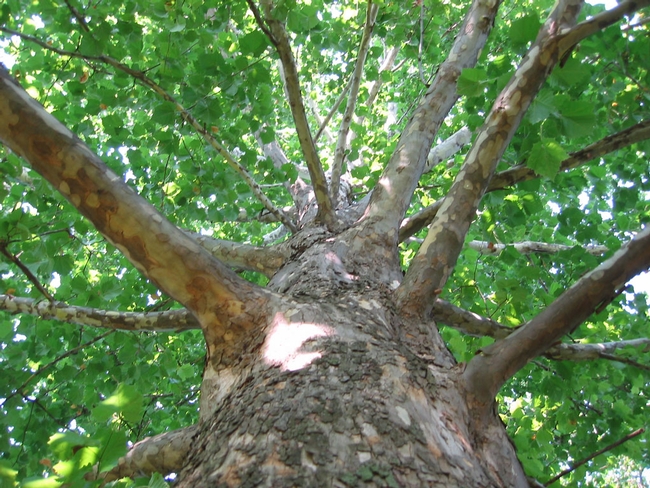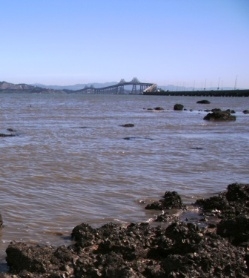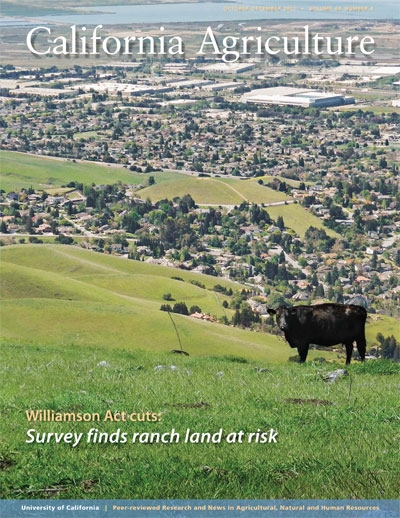Posts Tagged: ecosystem services
Loss of trees could portend loss of human life
An invasive pest from Asia is killing thousands of trees in Southern California, which may lead to the death of thousands of humans, reported Adam Rogers on Wired.com.
Polyphagous shot hole borer females drill holes inside trees to lay their eggs. In the process, they deposit a fungus that grows and provides food for larvae. The fungus gums up the trees' channels for water and nutrient transport, eventually killing it. Called Fusarium dieback, the condition is on track to kill 26.8 million trees across Southern California in the next few years.
With data from a U.S. Forest Services study, which found that fewer trees is related to respiratory and cardiovascular disease deaths in people, the reporter underscored the dire human-health implications of polyphagous shot hole borer.
Trees also provide valuable "ecosystem services," such as reducing light and heat intensity, protecting water, cleaning the air of pollutants, providing wildlife habitat and storing carbon. The forest service combined satellite data and field plot data to calculate the costs and benefits of trees. The potential loss of ecosystem services because of polyphagous shot hole borer is $1.4 billion, not including the public health cost.
“A normal response to an invasive pest means millions of dollars would be thrown at it,” said John Kabashima, UC Cooperative Extension advisor emeritus who is working on staving off a catastrophe. “This one has received hundreds of thousands.”
Kabashima and other scientists are identifying infected trees to cut them down and chip the wood to prevent further spread. The tell-tale signs are little holes and sugar volcanoes that tend to show up first on the north side of the trunk or limb.
"You have to get out and walk around each tree, which we're doing in Orange County parks," Kabashima said. "We go out on off-road Segways. We can cover square miles in a day."
A Push to Protect Pollinators
A United Nations' organization today issued a global pollinator health report and the news was not good. The two-year global assessment by the...
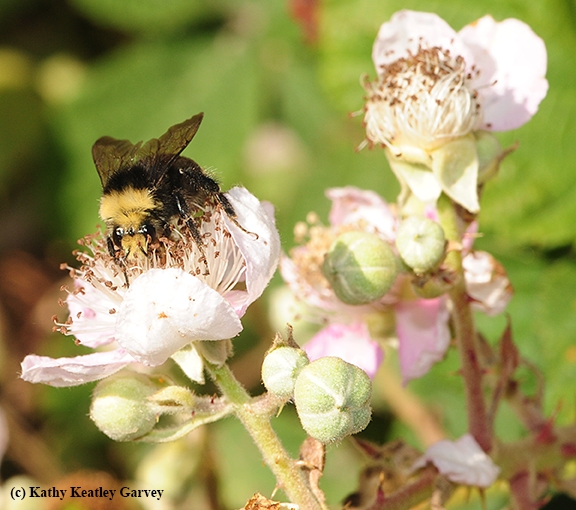
A yellow-faced bumble bee, Bombus vosnesenskii, foraging on a blackberry blossom. (Photo by KathY Keatley Garvey)
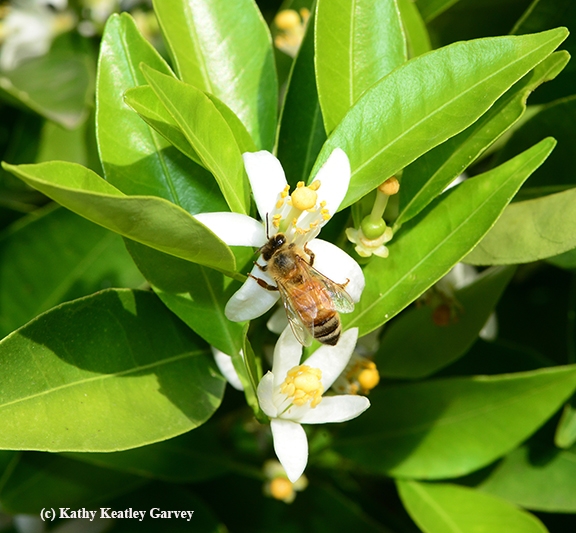
A honey bee pollinating a tangerine blossom. (Photo by Kathy Keatley Garvey)

A squash bee, Peponapis pruinosa, pollinating a squash blossom. (Photo by Kathy Keatley Garvey)
Bodega Marine Lab keeps watch on ocean temperatures
Ocean waters are warming, sea level is rising, seawater is becoming more acidic, and shoreline erosion is intensifying. The world’s oceans are reacting to increased carbon dioxide and other greenhouse gases in the earth’s atmosphere.
“The physical and chemical environment of the ocean is changing with the climate,” said John Largier of the UC Davis Bodega Marine Laboratory. “This affects ecosystems — like tidal marshes and coral reefs that protect us from storms and flooding.”
The ocean brings stability to the earth’s climate. It heats up and cools down more slowly than the land and the air. With climate change, the ocean absorbs excess heat trapped in the earth’s system by the increased concentration of gases in the atmosphere.
As seawater warms, it expands. The increase in the ocean’s heat content has contributed to one of the most visible effects of global warming — rising sea level. Thermal expansion, along with melting polar ice caps and glaciers, has led to global sea level rise of more than seven inches over the last century.
“When the ocean begins to warm up, then you know that the earth’s climate is changing,” said Largier, a professor in the Department of Environmental Science and Policy. “Even if we stop putting greenhouse gases into the atmosphere right now, the ocean has warmed up, and it will take centuries for it to cool down. People don’t realize that we’ve already made a long-term commitment to climate change.”
At the Bodega Marine Lab, Largier and other scientists are studying the regional impacts of climate change on the waters off California, which include an increase in coastal upwelling. Driven by winds, upwelling pulls cold water and nutrients from the ocean depths to the surface along the shore and contributes to the “marine layer,” the blanket of cool moist air that moderates California temperatures. Largier’s research shows a trend toward stronger winds and an increase in upwelling since 1982, leading to cooler waters off central and northern California.
“Worldwide, the ocean’s surface water is getting warmer, but in California, the ocean is getting colder near shore,” said Largier. “This is intriguing because it shows that climate change is not going to have the same effect everywhere. There will be regional differences.”
This article was condensed slightly from UC Davis “CA&ES Outlook” magazine. Read the full article on page 7.
Read John Largier's scientific advisory group report on how changes in the ocean might affect two valuable marine sanctuaries off the northern California coast: "Climate Change Impacts: Gulf of the Farallones and Cordell Bank National Marine Sanctuaries"

John Largier along the northern California coast. (Photo: Jennifer Sauter/UC Davis)
Williamson Act cuts put California open space at risk
Owners of 20 percent of California rangeland may choose to sell their land, perhaps to developers, if they don't receive tax breaks from the Williamson Act, according to researchers in the UC Davis Department of Evolution and Ecology. This could cause sweeping landscape change in California, pointed out Michael Krasney on Forum, a talk radio program broadcast by KQED radio.
Krasney hosted a half-hour show on the Williamson Act, basing the segment on research published in the current issue of California Agriculture journal. Lynn Huntsinger, professor of rangeland ecology and management at UC Berkeley, was a guest.
Today, 15 million acres of open space are protected because of the Williamson Act. The grasslands and oak woodlands provide the public with a variety of ecosystem services, such as beautiful, open vistas along highways and byways, wildlife habitat and carbon sequestration.
Nearby open space raises the value of homes
The closer homes are to open spaces – parks, stream and river corridors, forests and other natural lands – the higher the value of the homes in Riverside and San Bernardino counties. However, if homes are far from such open land, homebuyers tend to place an especially high value on lot size.
These were some of the findings of research, which graduate student Monobina Mukherjee at UC Riverside conducted in collaboration with Linda Fernandez, a former associate professor in the UC Riverside Department of Environmental Sciences. A summary of this research is in the September-October 2011 issue of UPDATE, a newsletter published by the Giannini Foundation of Agricultural Economics.
Open space provides a broad range of benefits to communities – such as rural vistas, wildlife habitat and relief from urban congestion – which go beyond the benefits of the land to its owners. In conducting this research, Mukherjee and Fernandez sought to analyze how a policy of land conservation and wildlife habitat preservation influences the housing market.
Mukherjee and Fernandez's study was focused on San Bernardino and Riverside counties. Riverside implemented the Riverside County Integrated Project in 1999 to support conservation of open space and wildlife habitat. San Bernardino County has abundant open space, including wildland in national and state forests. The researchers designated study zones and used statistical analysis to determine the impact of open space and other variables on residential sale value.
“Larger yards sometimes seem to act as a substitute for public open space,” Mukherjee said. "I can see why this happens because these two counties experienced less dense, bigger parcel sales for period of time we have been analyzing."
In Riverside County, a 10 percent increase in the distance from the nearest park is associated with a small but statistically significant decrease in the sale price of the property, the study found. The same was true in San Bernardino County with respect to both wildland and city parks. The results showed that scarcity of open space in areas with big cities could lead homeowners to place even higher value on proximity to open space.
Mukherjee and Fernandez found the amenity values generated in this study could help public policymakers estimate the monetary benefits of open space and habitat conservation. The results can also be used for land-use planning and conservation decisions in Riverside and San Bernardino counties plus other regions with similar geographical characteristics and residential markets.
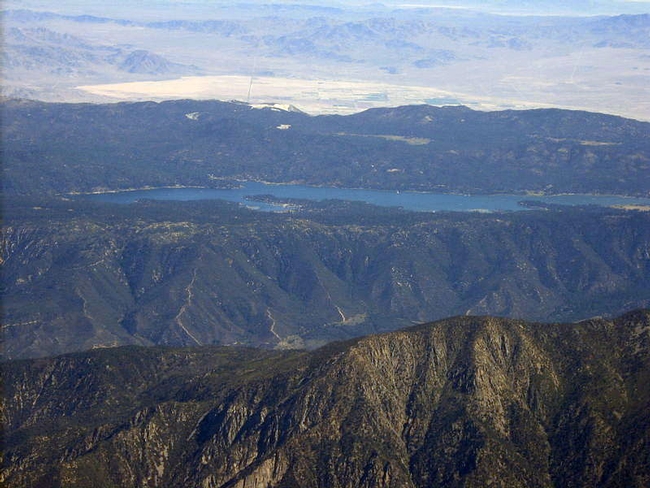
Open space in San Bernardino County, including Big Bear Lake and Lucerne Dry Lake. (Photo: Wikimedia Commons)


